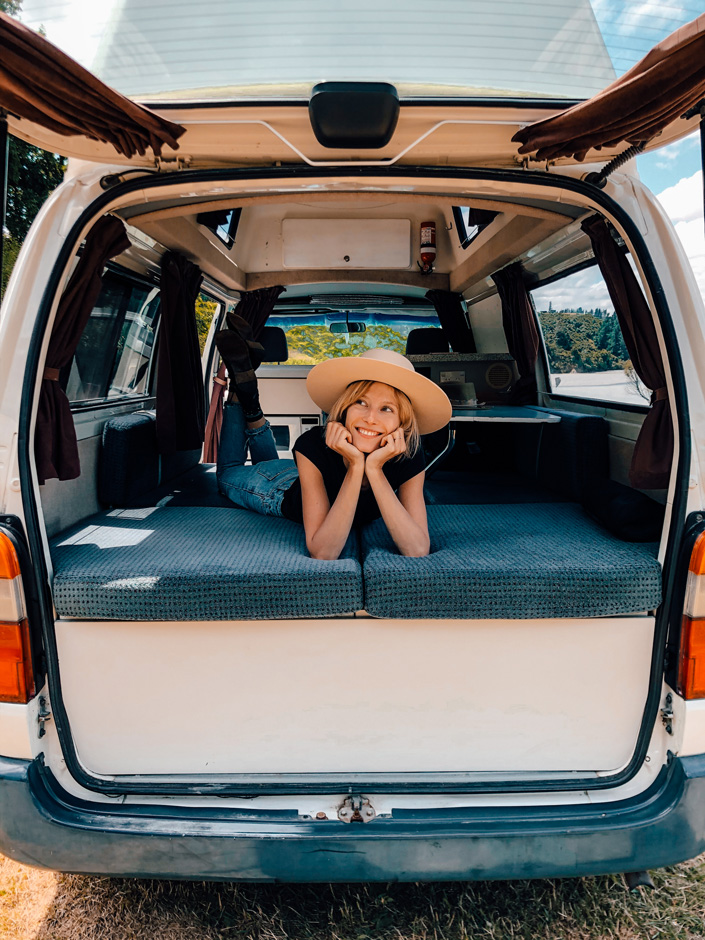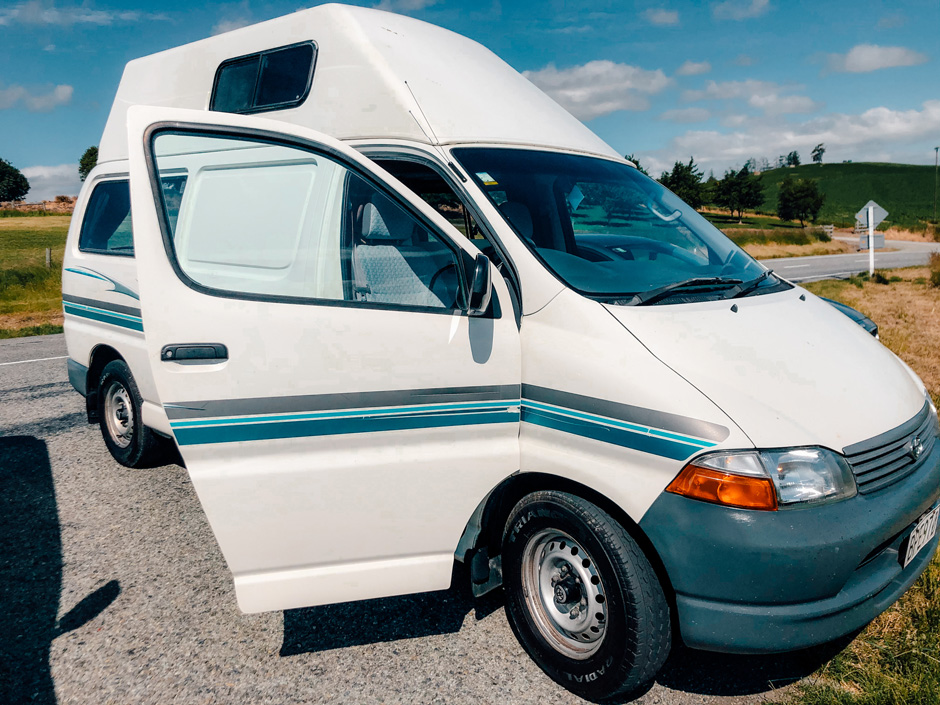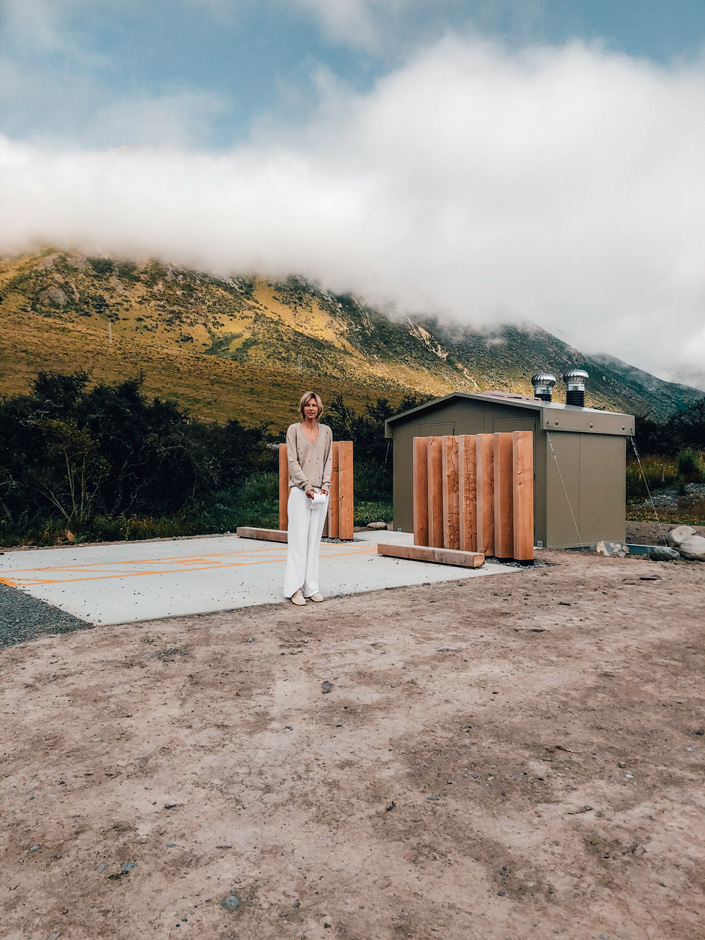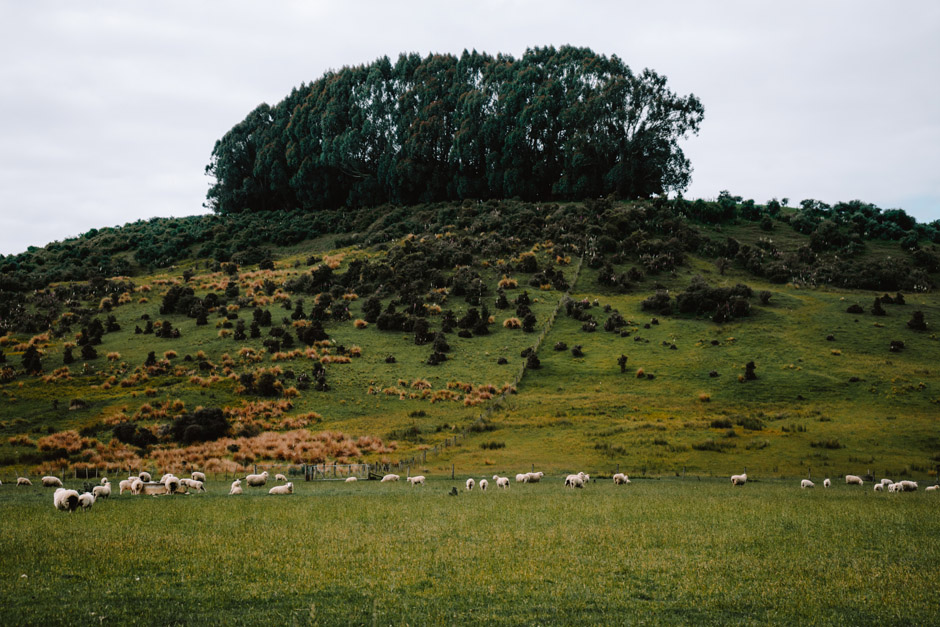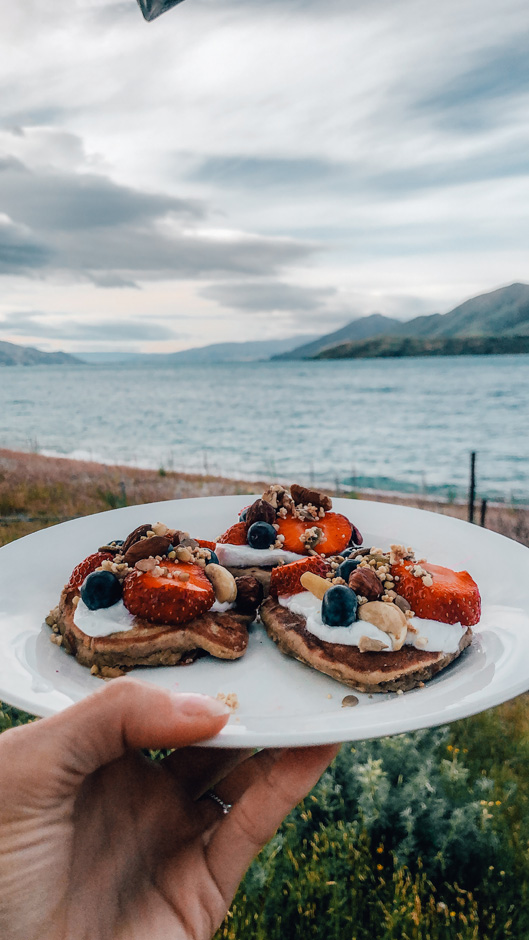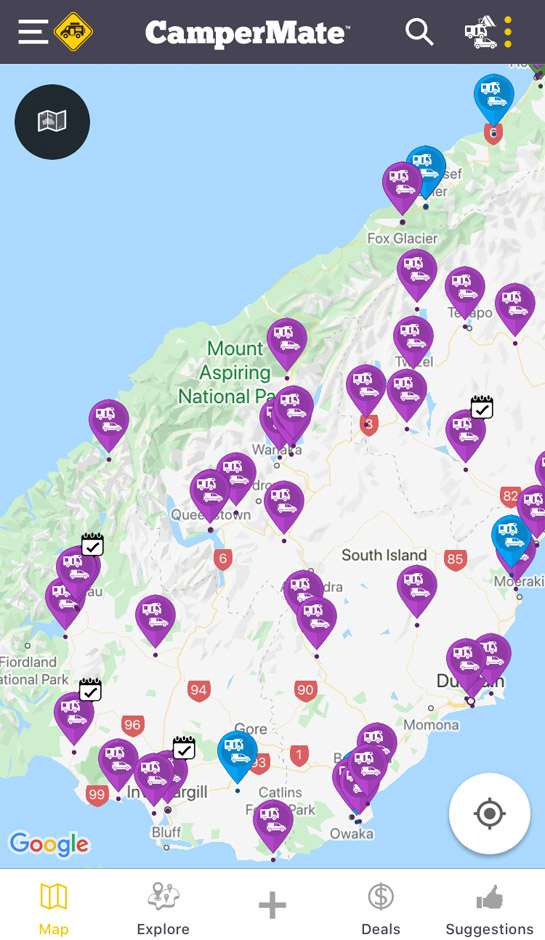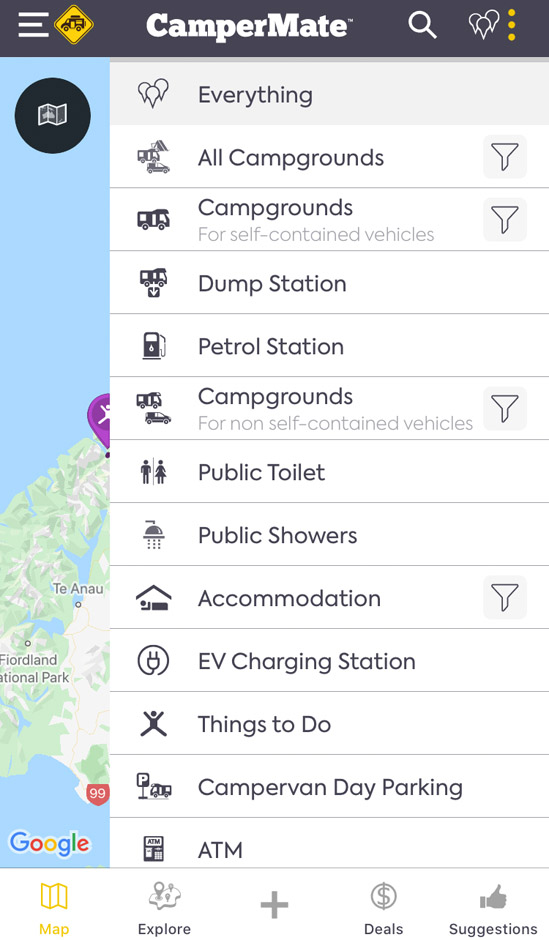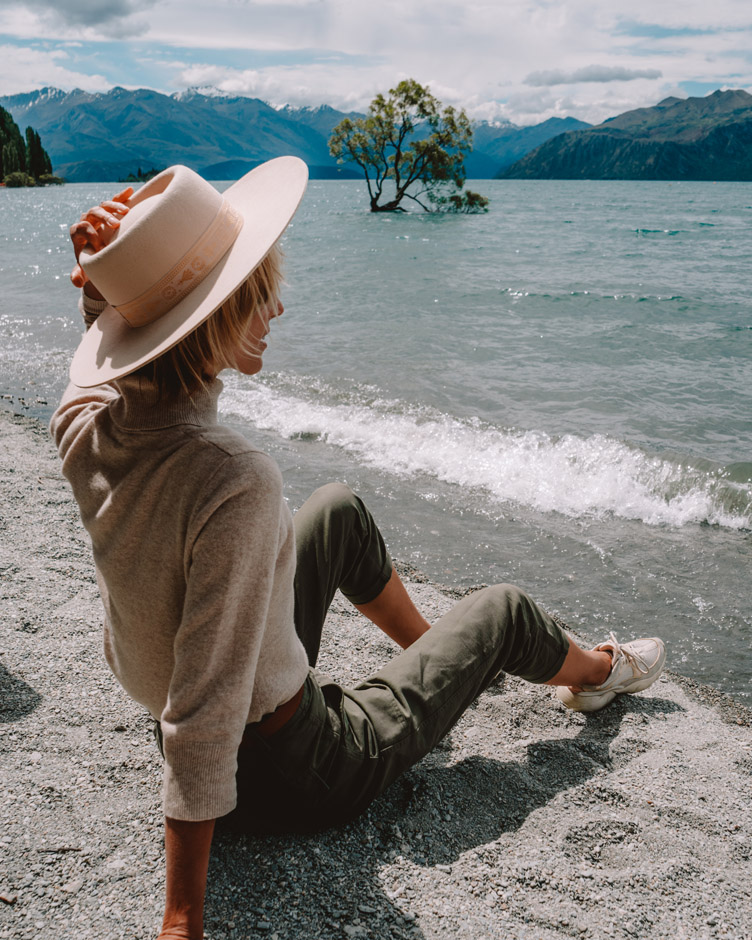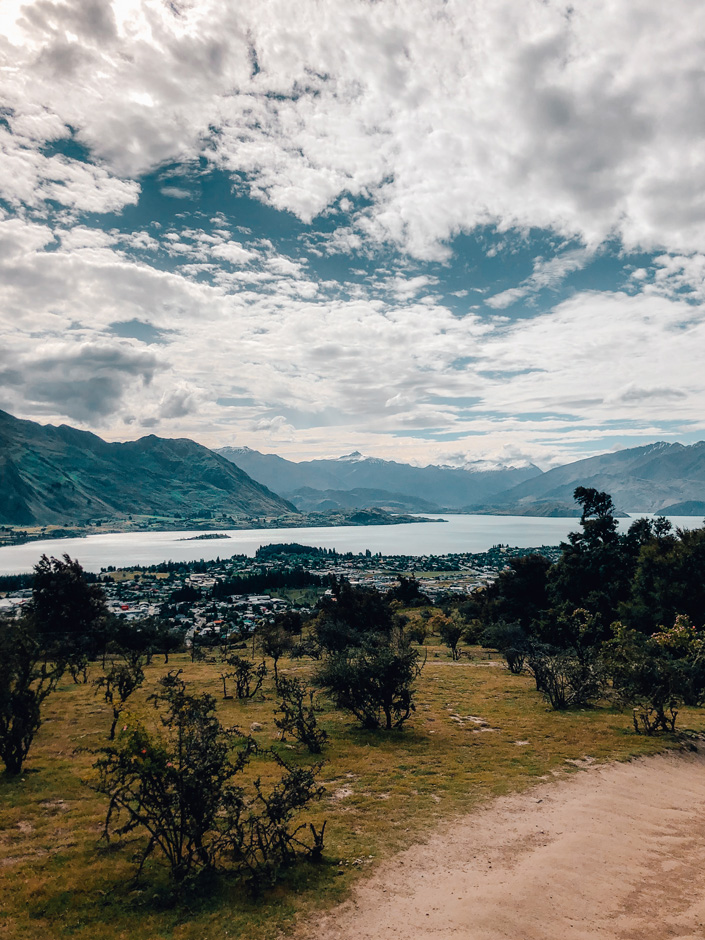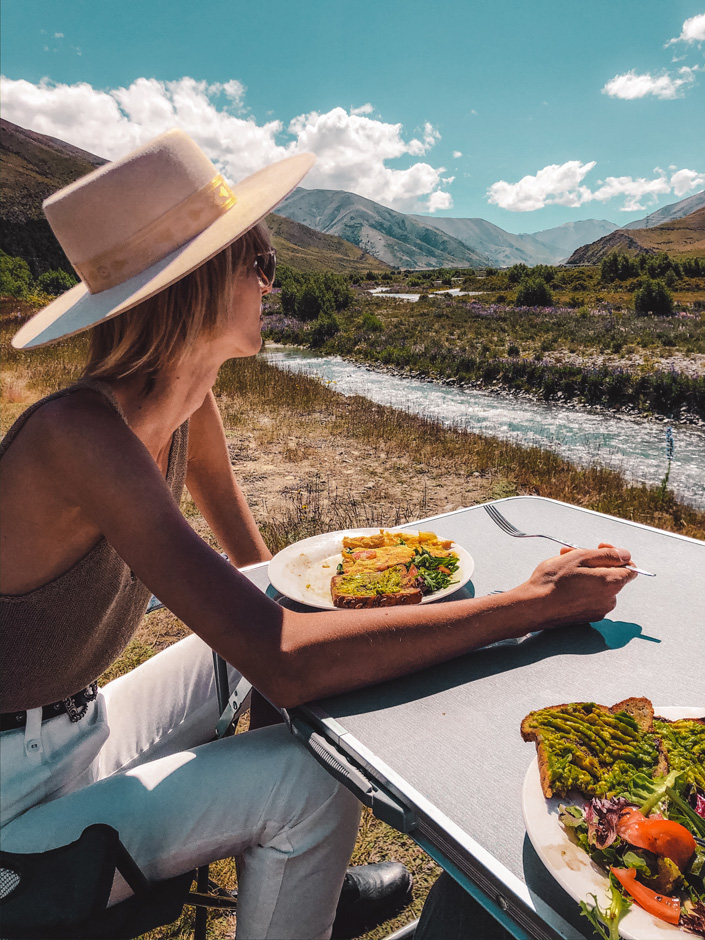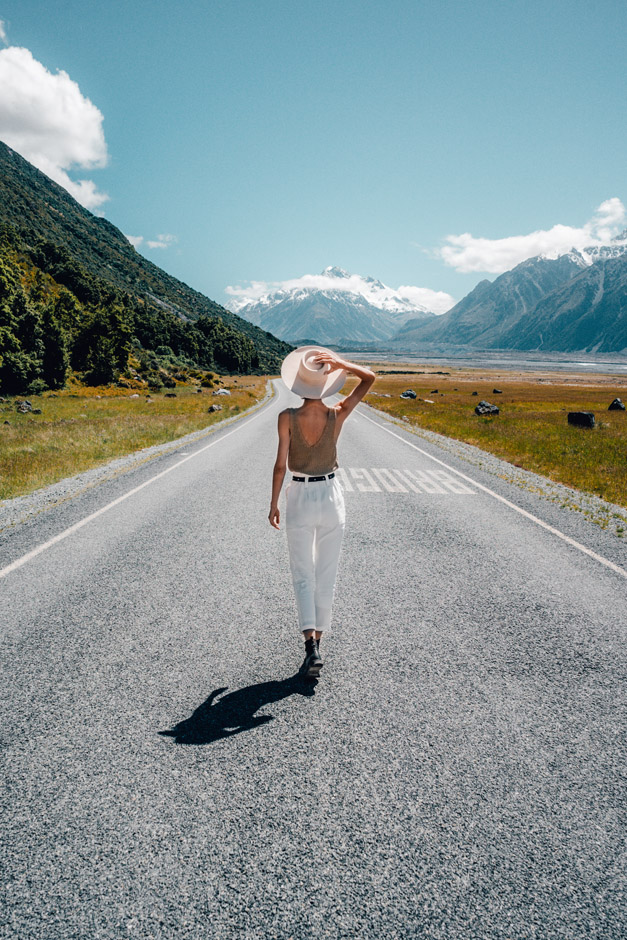Everything About Renting a CamperVan in New Zealand
New Zealand is one of the most extraordinary destinations in the world. The South Island hides many gems like majestic mountains and lakes with turquoise waters. The best way to discover this country is in a campervan. Traveling in a campervan allows you to spend more time enjoying the views and connect with nature on a way you’d never be able from your hotel room. It also gives you the freedom of traveling you’ve never experience before. We know that if you have never traveled in campervan in might be confusing. You probably ask yourself a million questions and worry how it all will go. We are here to answer the questions and reassure you- traveling in a campervan is awesome. By the end of the trip in New Zealand, you’ll want to plan another roadtrip in campervan for sure.
How far in Advance do I Need to Book?
The truth is the earliest, the best. That’s especially true if you plan to travel during a high season. Campervans are booked mostly 2-3 months before the travel date.
However, if you decide on a last minute trip, do not get discouraged. It this case, send an email to all of campervan companies you find reliable. If they provide a phone number- call. You might get lucky- just as we did, finding a campervan over Christmas period in New Zealand, booking 2 DAYS ahead 🥳
↬ Read : 10 Days Campervan Road Trip in South New Zealand
Choosing the Right Company
It all starts right there. There is a dozen campervan rental companies in New Zealand and they all offer almost the same van and experience. How do you choose the right company to rent from?
Read Reviews
We faced the same problem. And found a simple answer: opinions and recommendations. And we do not talk about those pop up comments you can find on rental company’s website. Of course they’d choose the best ones and hide the rest. We think that Google Maps reviews and Tripadvisor are the most reliable.
The most important thing to look at the reviews talking about the state of vehicules the company provides. Of course a flat tire can happen to anyone, but the engine should not die in the middle of your holidays. Some people are very picky, so don’t eliminate a company only if someone says that “the van was not equipped well cos it had only 1 pan” 🙄. Make sure also that there are positive comments on customer service as communication with them could be very important if something happens during the trip.
Look for Recommendations
Look for a company others recommend. Like us on our blog, or other similar websites. Specially on smaller blogs, people write their own experience and are usually trust worthy.
Check the Van Quality & Equipment
You might have found the good company. Next thing is visiting their website and checking the campervan. Read which year it was made in. How many litres of gasoline it burns per 100km. Does it come with sheets, blankets and cutlery? Do you have to pay extra for picnic tables and chairs? How much is the insurance? And the last: what’s the bond required.
↬ Note : In New Zealand, each campervan company will require you to a leave deposit. It will be a sum of money blocked on your credit card in case of accidents or any damage. A deposit can go up to 1000 NZD, but will be returned to you as soon as you return the van in the same conditions (the money can be returned to the same credit card only!).
Companies we Recommend:
Campa South Rentals : it’s a family run business. Graham and Susan are the kindest people we have met. We love how worry-free and straightforward they are. Their vans might be a bit oldish, but they are functioning well and are equipped with everything you might need during your trip. Graham will walk you though usage of the van, while Susan deals with payments and insurances. We loved renting with them and can highly recommend this company. A bonus: you’ll get to play with their doggos during pick up and drop off the van. Those Australian Shepherds are just the cutest.
Britz/Mighty/Maui : those are one of the most popular campervan companies. They are more expensive, but provide great service and very good vans. We rented with Britz in Australia and had agreat experience.
Euro Campers : it was our original choice, but they did not have vans available for our travel dates. They have really great vans for really affordable prices. We recommended this company to friends who traveled 2 months after us and they were very happy with it.
Mad Campers : is another highly rated campervan company. They have great, small vans. We have not rented with them, but have done enough research to know people are very satisfied with this company.
Jucy : is probably the most popular campervan company in New Zealand and Australia. You will see those green & purple vans everywhere on the island. It seems that their company is reliable and vehicles are in good conditions.
Which Van to Choose?
All right, so you picked the company and know that their vans are in good shape. Which van to choose?
Self-Contained or Not Self-Contained
Easy: definitely self contained! The only difference is a poti-pota toilet- the self-contain vans have it. This means that van is registered as one that can stay at any type of campground. Having a self-contained van will allow you to stay at any campgrounds, also at the free ones, which are inaccessible to non-self-contained vans.
↬ Read : Visit & Hike Mount Cook National Park
Poti-Pota Toilet
As we talk about self-contained van, let’s answer this question. One that was worrying us a lot before we traveled.
Poti-pota toilet will be available for you in the self-contained van. If you’d like to use it you have to purchase a special liquid before your trip- the rental company will have it. However the truth is that you will most likely NEVER USE IT. There are toilets on almost every campground. We stayed only once on a free campground that didn’t have a toilet. There are public toilets EVERYWHERE in New Zealand. You can locate them on CamperMate App.
Don’t stress or get grossed out about poti-pota. If I (Martyna) with severe IBS (Irritable Bowl Syndrome), was fine using the public toilets and we did not have to even once use poti-pota- you will be fine as well 😜
Big or Small, with Rooftop Space or Flat, inside Kitchen or Outside?
This question is easily answered by two things : how many people you travel with and what’s your budget.
Motorhomes
For a family of 4 we definitely suggest either a large motorhome (if budget allows) or a van with extra rooftop space that fits an extra bed below the ceiling. Those van burn up to 24l of gasoline per 100km and don’t come cheap. However you will have proper kitchen and even a toilet with shower.
Berths
If you are a couple you will be fine with a smaller van that fits only 2 people. The most basic ones have kitchen at the back- you need to cook standing outside. There is ca. 15l fresh water tank, tiny fridge, a push tap and camping cooker. Those vans will use less gasoline, but will be less comfortable.
We suggest you to get a berth campervan with inside kitchen, normal fridge and stowe. Those vans are have high ceilling, therefor you can stand in them. We can say that we cannot imagine doing this roadtrip in other van. It’s not as much for the weather, although imagining to cook outside during a heavy rain and low temperatures seem problematic at least. It’s the SANDFLIES that are absolute nightmare in New Zealand. There were evernings where we would lock ourselves in the van and not go out even to get water, as the flies were biting so much!
↬ Note : Sandflies are a real problem in New Zealand. They are not only annoying, but bite really painful and leave red marks for weeks.
↬ Read : Cruise Milford Sound – Guide to the Natural World Wonder & Surroundings
Driving the Campervan in New Zealand
If you never drove a campervan before New Zealand and are worrying how to handle a bigger car- be assured it’s the same as driving a regular car. I was surprised to feel no difference at all.
Handeling the Van: Gray water (waste), Fresh Water etc.
You will be walked through all this when you pick up the van. Do not worry- it actually is very easy.
You will locate dumb and fresh water station on CamperMate app. There are two tubes in the van: one you connect to a tap which drops the gray (dirty water from the sink). The second one you will connect to a tap with fresh water and refill your tank.
We highly suggest you to do it everyday. Already on the first day you’ll become aware of how much water gets used for simple things, like washing face or cleaning the dishes. Also if you do not empty the gray water it can start leaking and wet the carper around the sink (guess how we found out about it 🙄).
Will I Be Able to Charge Electronics?
Most vans are equipped with electric outlets and can be easily used- once plugged to electricity (a long cable that’s connected to the car and you plug in a special outlet on the campground). The problem is that powered sites are the most expensive and usually don’t offer any views.
There is a simple solution: charging everything while driving via usb. There are 2-4 usb outlets in each van. You can charge your phones easily through them.
↬ Best TIP ever : get a usb computer charger before the trip!
We were able to even charge our camera batteries through usb. We didn’t need to use powered site at all. HOWEVER the van will charge the batteries only when you drive. The biggest usage of power will be consumed by your fridge. We simply suggest you to switch off the fridge during the night. The temperatures are lower anyways and your food will be fine for a few hours in a still cold but not powered fridge. This will ensure your battery to stay at the right level.
Can we Cook in the Van?
YES! It’s one of the most important reasons of renting a campervan and especially in New Zealand. It will allow you to cook and save money on restaurants.
First of all : we suggest you not to use meat for those 10 days. Meat gets bad really quickly, needs to be cooked long and raw can’t touch any other products. Try to stick to veggies and fish for those few days.
Our simple recipes to cook in a van:
Breakfast
Oatmeal : put 1 cup of oatmeal in a pot and add 1 cup of plant based milk. Bring to boil, steering often until desired consistency. Pour into a bowl. Add cinnamon, banana slices, strawberries, berries and nuts. Top with peanut butter.
Banana pancakes : mash 2 bananas in a bowl. Add 1 egg, half a cup of plant based milk, 1 teaspoon of cinnamon, 1 spoon of olive oil (or melted butter) and mix. Add 1 cup of flower and 1 teaspoon of baking powder. Mix well until smooth. Fry on a slightly greased pan.
Lunch
Pasta : cook pasta as indicated on the box. Chop 1 zucchini 4 mushrooms. Fry them on a preheated pan with 1 tbs of olive oil. Once vegetables are soft add tomato sauce. Season with salt and pepper. Drain pasta and pour on the pan. Mix the pasta with the sauce. Move to deep plates and add parmesan.
Omelet : chop 1 tomato, 1 mushroom (and any other veggie that you like: onion, bell peppers). Wisk 3 eggs in a bowl with a fork, season with salt and pepper. Add the vegetables and mix well. Add some cheese. Pour on a hot pan with 1 tbs of olive oil. Fry under cover for few minutes. Serve with green salad.
Dinner
White fish : season the fish with salt, pepper and spices. Peal some potatoes and cook them. Chop zucchini and add to the cooking potatoes 5 min before they are ready. Warm 1tbs of olive oil on the pan and fry the fish from both sides. Drain potatoes and zucchini, put on a plate and season with salt and some olive oil. Add the fish.
Quinoa tofu dish : cook quinoa as indicated on a package. Chop different veggies: carrots, mushrooms, zucchini, tomatoes, bell peppers, onions etc. and tofu. Chop fresh coriander. Warm 2tbs of olive oil on the pan. Cook the veggies starting with carrots (they cook longest), then add onions, zucchini, bell peppers, mushrooms, tofu and at the very end tomatoes. Season to taste. Mix the quinoa into the vegetables. Move into bowls. Add chopped coriander and a bit of lemon juice.
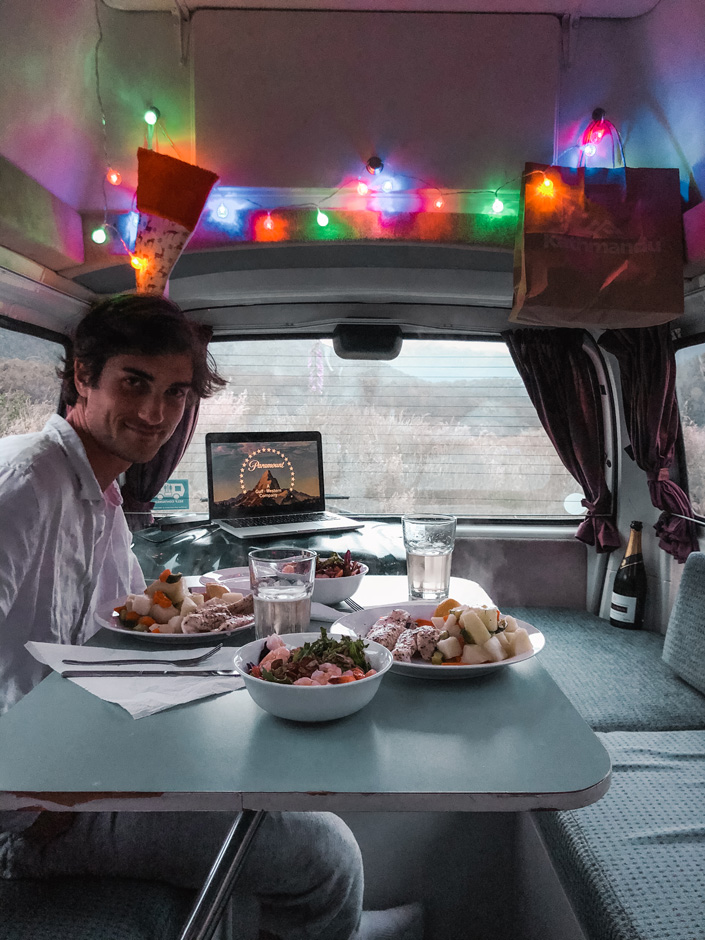
Xmas dinner 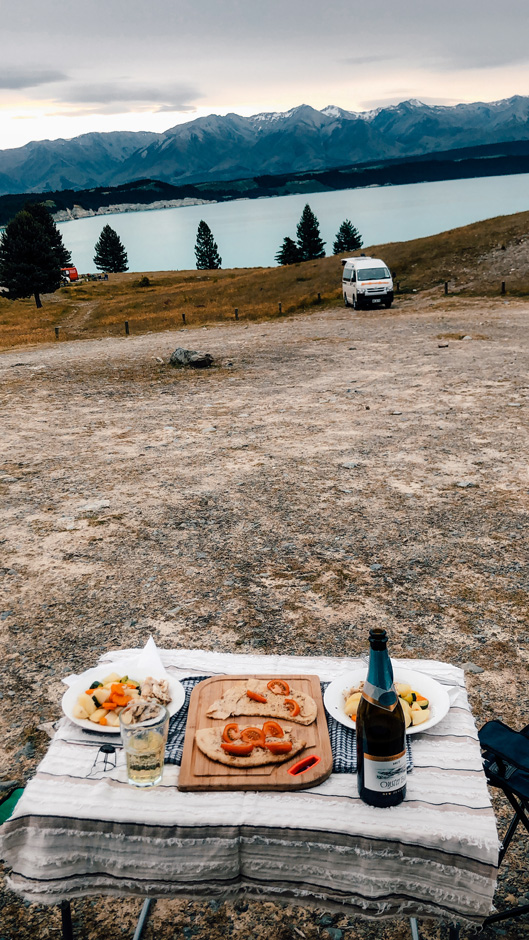
What Campgrounds look like?
All campgrounds are different. There are 3 main types:
- Free campgrounds (only self-contained vehicles)
- Low cost/DOC campgrounds
- Holiday Parks
Free campgrounds
Free campgrounds will of course have the least utilities. You will find a non-flush toilet and maybe a few picnic tables. Or maybe it will be just a land with fantastic view and nothing else.
Amazing free & best campgrounds we stayed at : Lake Pukaki Overnight Campervan Parking, Kingston Lake Camp and Twenty Five Mile Stream. Do not miss those if you can!
↬ Read : Visit Glenorchy & Queenstown – the Most Famous Movie Set Destination
DOC/low cost campgrounds
DOC stands for Department of Conservation- government campsites. There are many around the South Islands and they are good. Here, you will find flush/non flush toilets, picnic tables and sometimes little ‘kitchen’ spaces with sinks and running water.
The DOC campsite costs 7 NZD (3,8 EUR) per person per night. We however highly advise you to get the New Zealand 7 day campervan pass for 60 NZD (33 ER) for two people. The only thing you need to remember is that a pass lasts for 7 consecutive days.
↬ Note : Even with a DOC pass, you need to fill in a paper sheet at the entrance to a campsite. In the ‘payment’ section, write the number of your pass. Leave one part behind your windshield, drop the second into the box at the entrance.
Holiday Parks
The most “fancy” and expensive campsites. Do not expect views. You will most likely be squeezed between many other vans. Those parks have barbecues and proper kitchens for you to use. Also toilets and showers with hot water. It does seem a bit like luxury with its cost at around 50 NZD (27,5 EUR) per site.
↬ Read : An Honest Review of Franz Josef Glacier, New Zealand – Is it really worth a visit?
Where will I Shower?
Unless you have a big budget for your New Zealand adventure and are able to rent a campervan with full toilet and shower, you will need to use public showers. However, in New Zealand it is less problematic than it sounds.
There are many public showers in most towns. Of course if you stay in a Holiday Park you will be able to use showers there. Otherwise, you can look for showers with hot water on CamperMate app. A list of showers we used during our trip:
- shower in public shelter in Mt. Cook- have 2 NZD coins with you
- Queenstown service hub
- Wanaka Caltex gas station (5 NZD- 2,74 EUR ,2 people can enter and water runs way longer than 5 min)
- campground in Franz Josef Glacier
Ok, let’s be honest: you will most likely not shower everyday. But it really is not that bad. Make sure to have baby wipes to refresh yourself when needed and shower is not available.
↬ Note : Usually girls will be more disturbed than man not having showers. It really helped me to have a normal sink with enough water to wash myself each night before going to sleep. That’s why van with kitchen inside is really useful.
Where Will I Use Toilets?
Well there are public toilets in New Zealand EVERYWHERE. There are toilets in every campsite and all touristic sites. Public toilets in Lake Tekapo and Haast will even play you music while you use them 😄
Not to get too personal but if you are worrying about it let me assure you: I suffer from IBS (Irritable Bowel Syndrome) and I was fine during this 10 days trip- so will you 😉
Do I Need CamperMate app?
YES!!! We used CamperMate app all the time during our trip. It shows you the campgrounds marked in different colors according to their price (green free, blue low cost/DOC, purple Holiday Parks), public toilets, showers, gas stations, dump stations. It also shows interest sites in each location, supermarkets, LPG bottle fill, laundromats, restaurants: EVERYTHING.
↬ TIP : Load the offline map before your travels. Thanks to this, even when you will be out of reception you’ll still be able to use the app.
What if I Need to Make a Wash?
You probably will need to make a wash at least once during your trip. And it will be fast and easy. Our suggestion: there is a laundromat at Caltex gas station in Wanaka. It takes about 50 min total for wash and dry and costs about 12 NZD (6,6 EUR) for both. Set the wash, got for shower next door. Rest of the time will pass quickly, as Wanaka is one of few places with really good 4G signal 📱
↬ Read : Hike Roy’s Peak in Wanaka – New Zealand
How Much Will it Cost?
Probably one of the most important questions. Road trip in New Zealand is not one of the most budget friendly adventures, but it is worth every cent spent. The total cost will vary a lot depending on the season you choose to visit in. Below, we added up our average expenses for 11 days of travels over Christmas 2019:
- campervan rental 155 New Zealand Dollars per day for a berth van with inside kitchen
- sim card 51 NZD
- campsites 60 NZD DOC pass for 2 pp plus 34 NZD for powered site in Franz Josef Glacier
- groceries 550 NZD for 2 pp
- gasoline 670 NZD
- Milford Sound cruise 190 NZD for 2 pp
- extras: showers, wash, etc around 100 NZD
All that adds up to 3360 NZD for 2 ppl for 11 days all included. Around 930 EUR per person.
Of course, the most expensive part of your trip to New Zealand is the campervan rental. The price will drop in different season or for smaller van.
↬ TIP : Smaller vans, even if a bit less comfortable will also use less gasoline = less money spend.
What to Take?
Without a doubt this is a question that troubled us a lot. How to dress? How cold will it get? What will we need in the van?
We decided to answer this question in a separate post.
We hope that this post answers all the questions you might have regarding your adventure on the South Island in New Zealand. If you would like to know anything else, leave us a comment below and we’ll be happy to help!
